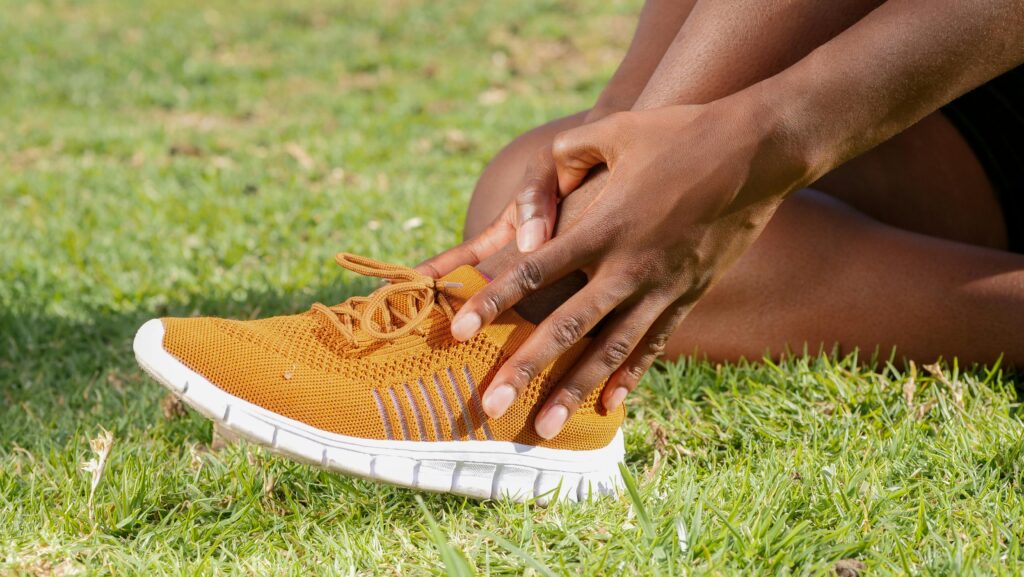INTRODUCTION
Most injuries feel like they occur unexpectedly, but in reality, most are a product of overuse or under preparation. It’s important to understand our body’s tissue load capacity and to find the right balance between training and recovery. By adopting smart training practices and prioritising proper recovery, we can significantly reduce the risk of injuries and enhance overall performance. Let’s find out how!
UNDERSTANDING LOAD CAPACITY
Tissue load capacity refers to the maximum stress or load that our body’s tissues—such as muscles, tendons, ligaments, and bones—can handle before they become susceptible to injury. Exercise places stress on these tissues, and in turn, prompts them to adapt and become stronger. This is a positive result from our training, but exceeding our tissues’ capacity without adequate recovery can lead to injuries. In order to allow the tissues to adapt safely, we need to properly balance training intensity with rest.

WHY INJURIES HAPPEN
Why injuries occur can be broken down into two categories: overuse or underprepared tissues. Both of these categories highlight why it’s important to be conscious of our exercise progression, be mindful of rest, and to pay attention to what our bodies are telling us.
Overuse Injuries: This category applies to use overtime. When repetitive stress is applied to tissues without sufficient recovery time, this leads to microtrauma and eventually, since the tissue cannot recover properly, injury. Common examples of this type of injury include tendonitis and stress fractures.
Underprepared Tissues: This category applies to tissues being unprepared for the demand we place on them. Sudden increases in training intensity or volume can overload tissues that haven’t properly adapted and this makes them more prone to injury. This often happens when you progress too quickly in exercise, like lifting too many sets/reps when you haven’t been lifting, or going out and running a 10k when you haven’t been running.
Types of Tissues and Their Injury Risks
Muscles: Muscles are very strong and can handle a lot of force, but they are susceptible to strains, especially when stretched beyond their capacity. You can “pull” or strain any muscle but a common example is a hamstring strain, either from things like sprinting without a warm up, or stretching the hamstring with some force.
Bones: Bones can develop stress fractures from repetitive impact activities or too much loading without enough rest. A common injury would be ‘shin splints’ which is typically from increasing your running distance too abruptly.
Tendons: Tendons are prone to inflammation due to overuse or improper progression when adding load. With tendons, you will typically see ‘tendonitis’ and a common injury is Achilles Tendonitis.
Ligaments: Ligaments can sprain or tear when joints are forced beyond their normal range of motion. Common injures include ankle sprains, or ligament tears in the knees.
Prevent Injuries and Build Resilient Tissues
There are times when you get injured and you know exactly what happened. Sometimes the forces applied to the body are too much for the body to handle when there are large impact injuries, but other times these injuries could be prevented by preparing the tissues properly and supporting these tissues with proper rest. Exercise is a great way to build a robust and resilient body so you can give yourself the best fighting chance when impact does happen and so you can keep on progressing and participating in the activities that you enjoy.
In order to keep your body feeling the best and staying injury free as long as possible, apply these concepts:
Progress Slowly and Gradually
When you are adding exercise into your life, follow the “10% rule”. Allow time for your tissues to adapt and get stronger by increasing training intensity or volume by no more than 10% per week. By taking this approach, you can help prevent overloading tissues. Listening to your body’s signals and allowing time for adaptation are crucial for safe progression.
Strength Training
Lifting weights will enhance the strength and resilience of muscles, tendons, and bones. By applying the overload principle, which is gradually increasing the demands on your muscles and nervous system over time, you will stimulate growth and adaptation, which will help prepare your tissues to respond positively to the demands you place on it. By training a variety of movements and planes of motion, you will also be preparing the body to best match and respond to how your body moves normally through sport and life.
Recovery is key
Don’t forget about recovery! Recovery includes rest from the specific activity you’re doing, along with getting adequate sleep, hydrating properly, and refueling with proper nutrition. If you’re starting off running, it’s good to include a day of rest in-between your runs to give your tissues time to recover. You can apply this principle to any specific activity you do, and if you’re looking to stay active most days, just vary the type of movement you are doing. For example, you can strength train on Mondays and Thursdays and then run on Tuesdays and Fridays while each day incorporating stretching and mobility work.

Conclusion
Preventing injuries is not about training harder but training smarter.
Understand and respect your body, progress gradually, incorporate strength training, and prioritise recovery. By balancing these elements, you can build a resilient body capable of achieving your fitness goals while minimising the risk of injury.


